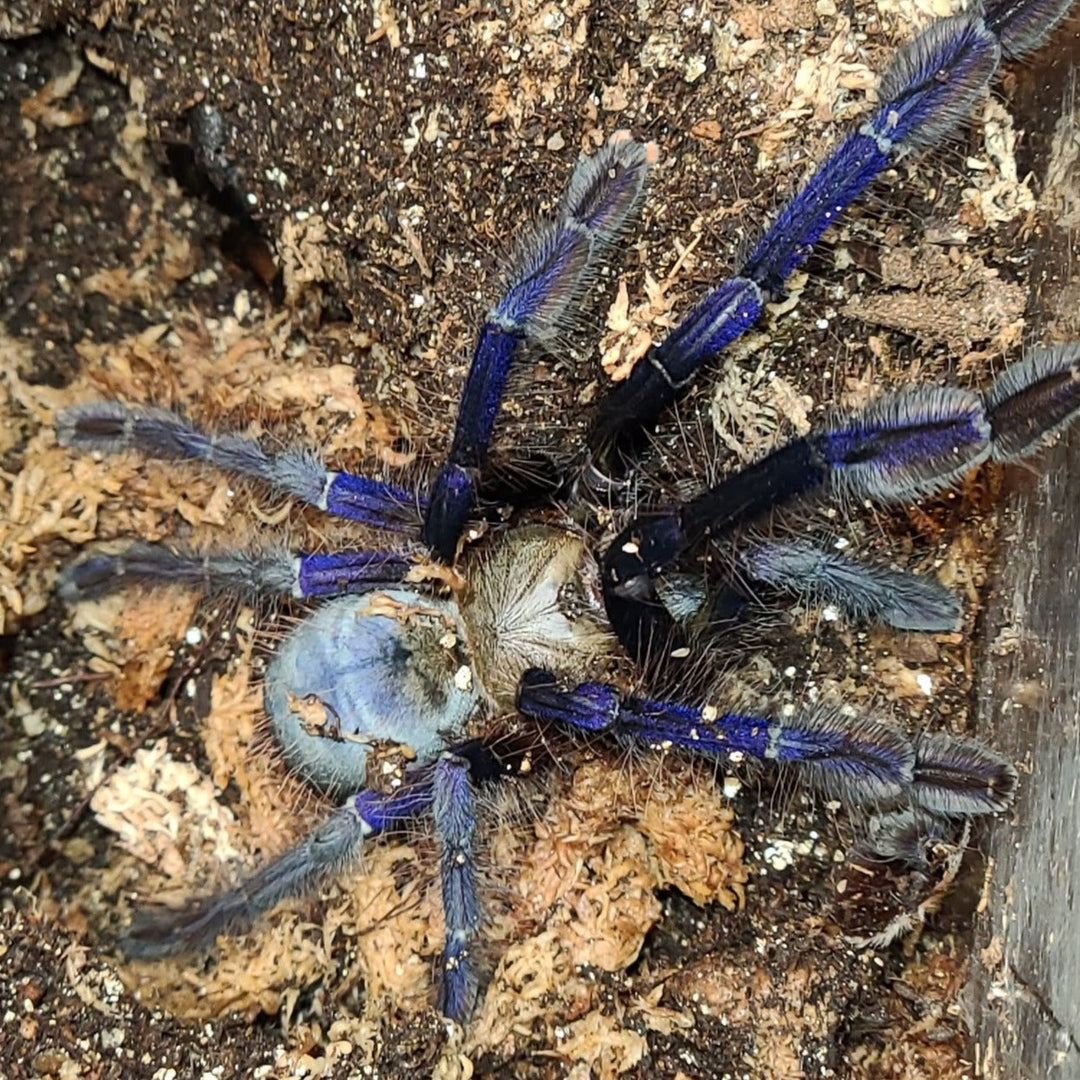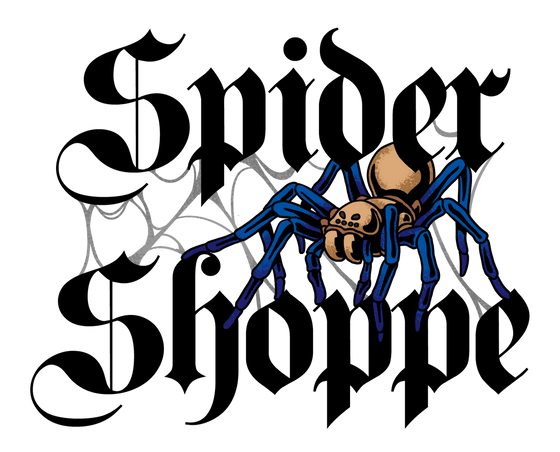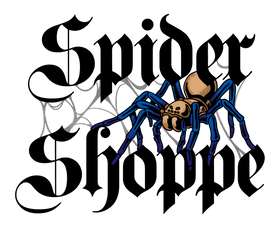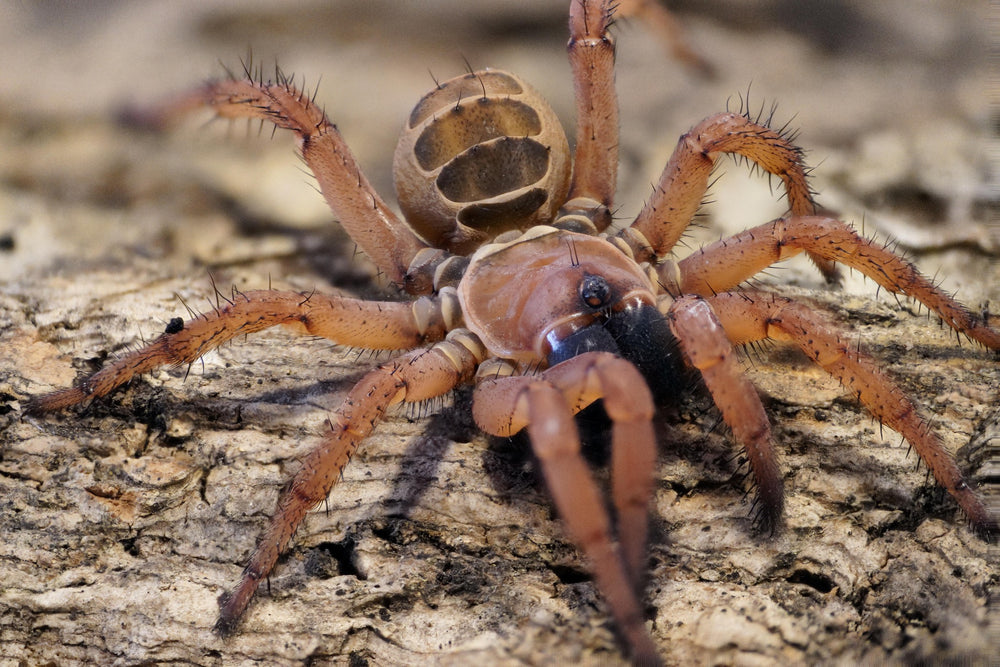
Omothymus violaceopes (Singapore Blue) 0.75-1"
- Live Arrival Guarantee
- Live Animals Ship FedEx Priority Overnight (Mon-Weds)
- In stock, ready to ship
- Inventory on the way
If you are looking for the creme-dela-creme of size, elegance, power and beauty in an Old World tarantula, earth tigers of the genus Omothymus are at the top of the list. The Singapore Blue Tarantula, Omothymus violaceopes Abraham is no exception. These jaw-dropping creatures reach a leg span of up to nine inches, making O. violaceopes one of the largest arboreal tarantulas on the planet. In addition to its massive size, this species develops insanely vivid deep, metallic, royal blue to purple legs coupled with an olivey champagne to silver carapace and a dusky to inky gray-blue abdomen with tiger-like chevrons. On top of that, these beasts are studded with exceptionally long, fire orange cactus spine-like setae. The combination of royal blue plus fiery orange setae is truly sublime and totally unique amongst tarantulas.
This tarantula is sculpted like a muscle car, with a sleek body and absurdly long, powerful legs equipped with massive scopula pads. O. violaceopes attack their prey similarly to a giant squid, Lashing out and anchoring onto their prey with their insanely elongated anterior legs/scopulae in the blink of an eye.
O. violaceopes ranges from Malaysia through Singapore, where it resides in tree hollows and can occupy lowland to mid elevation humid rainforests. They can tolerate cooler temperatures than obligate lowland arachnids. In fact, the type specimen was collected on Penang Hill at 2,000 ft elevation in 1924- a place with a long history of British colonists and European naturalists hunkering down to escape the relentless heat and humidity of surrounding lowland tropical forests on Penang Island, Malaysia. This tolerance for cooler temperatures makes O. violaceopes an adaptable spider in captivity, although most tarantulas function and grow well at room temperature.
O. violaceopes have large, leggy spiderlings that fare best in cross-ventilated arboreal cages with a thick airy substrate layer that is kept only slightly moist at most times. Organic potting mixes with lots of wood pulp are a nice option for these spiders throughout their lives, as components such as coconut coir, vermiculite and peat can stay a little too water-retentive for their well-being long-term. Plenty of ventilation but some humidity through periodic misting is crucial for the spiderlings, which are sensitive to stagnant air and damp substrates over prolonged periods. This species, like other Omothymus, burrows extensively as spiderlings and juveniles. As O. violaceopes gain in size, they become increasingly hardy. For larger juveniles to adults, allowing much of the substrate (or just the top half of the substrate depth in low humidity regions) to dry between periodic mistings is beneficial. Adult females attain massive sizes and so require a larger cage than most other tarantulas, so a large arboreal cage is necessary.
Another husbandry consideration for O. violaceopes is that they have oddly acute vision in at least one respect: being highly photosensitive. Unlike most other tarantulas, just shining a light on O. violaceopes can send them fleeing for shelter. They move like shadows to meld into darkness and require a perpetually dark place in the cage to stay at ease. As they approach adulthood, many specimens will increasingly avoid making subterranean burrows until they refuse to dig altogether (usually around the time they phase into adult coloration). O. violaceopes readily will utilize anything that looks or functions like a nook or tree hollow. Larger juveniles and adults should therefore be provided with a cork hide and/or large magnolia leaves or other structures to build their shelters.
As Old World tarantulas, O. violaceopes has more potent venom than most New World species and makes up for its lack of urticating hairs with being quite a defensive disposition–if cornered. Like giant squid in the deep ocean, these mysterious titans of the spider world are very shy and elusive, preferring to be shrouded in darkness. Overall, the Singapore Blue is an under-appreciated and unbelievably beautiful tarantula that seriously deserves a bigger fan club.
References:
Abraham, H.C., 1924, December. Some mygalomorph spiders from the Malay Peninsula. In Proceedings of the Zoological Society of London (Vol. 94, No. 4, pp. 1091-1124). Oxford, UK: Blackwell Publishing Ltd.

Info on our shipping policy can be found on our T&C page.



